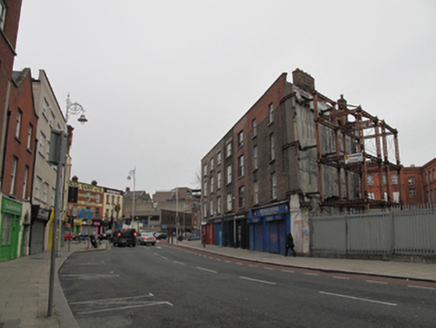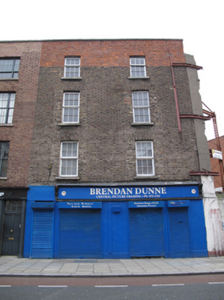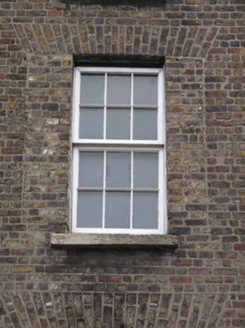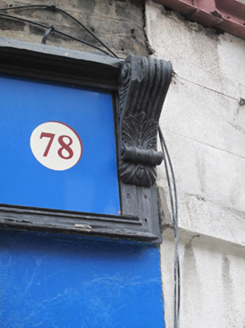Survey Data
Reg No
50010597
Rating
Regional
Categories of Special Interest
Architectural
Original Use
House
In Use As
Shop/retail outlet
Date
1820 - 1825
Coordinates
315274, 234766
Date Recorded
02/12/2011
Date Updated
--/--/--
Description
Terraced two-bay four-storey house, built 1823, with shopfront to ground floor. M-profile slate roof with clay ridge tiles, hipped to north, and to south to rear (east) elevation. Yellow brick multiple flue chimneystack having red brick string course to cap, brown brick square-plan chimneystack to rear with red brick string course and clay pot. Roof concealed behind rebuilt red brick parapet wall with masonry coping. Red clamp-kilned brick walls laid in Flemish bond, recent re-pointing. Gauged brick square-headed window openings to front having replacement timber sliding sash windows, set within formerly wider, perhaps tripartite openings. Floriated consoles and fascia retained from older shopfront, with recent infill shopfront.
Appraisal
This house and shop property forms part of a terrace laid out c.1823 by the Wide Streets Commissioners. It originally constituted a pair of buildings, each having Wyatt windows and a simple shopfront, matching the others on the terrace. Despite alterations it maintains the parapet height and fenestration rhythm of its neighbours, contributing to the overall impression and significance of the terrace. The patina of age preserved in the clamp-kilned brick walls and the pleasingly contrasting red brick of the parapet repairs adds character to the structure, while the timber details to the shopfront consoles add artistic interest. These elements combine to allow the structure to contribute positively to the streetscape and help it form some of the unique heritage identity of this area of Dublin. The evidence for formerly wider window openings adds interest. Capel Street, which was laid out in the late seventeenth century, was one of the primary commercial thoroughfares of the city until the early part of the twentieth century, retaining a significant amount of its eighteenth and nineteenth-century fabric.







